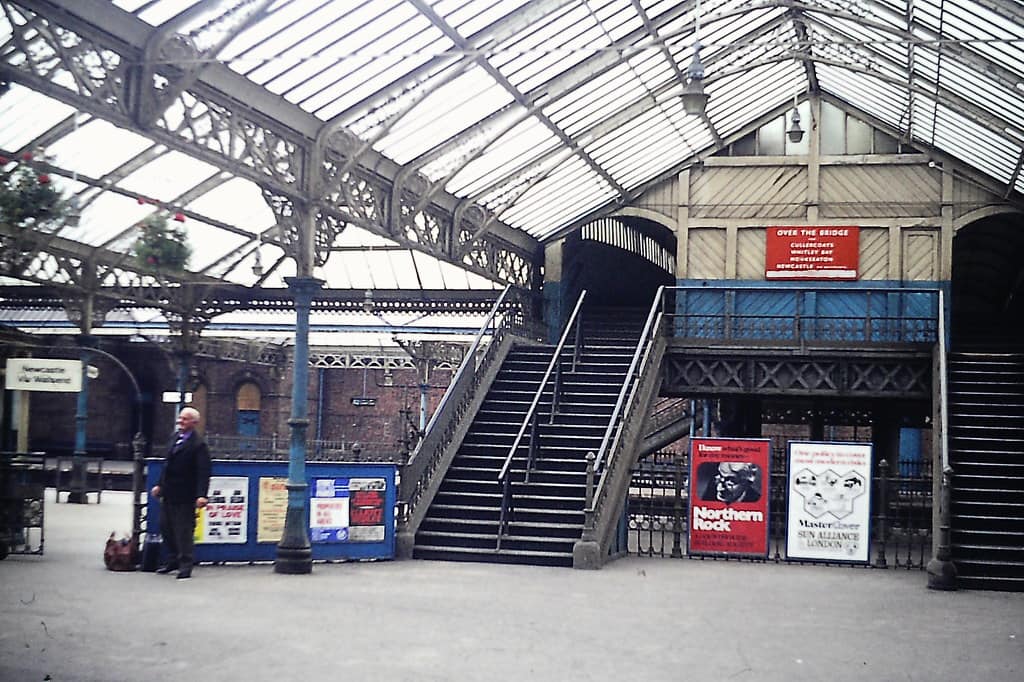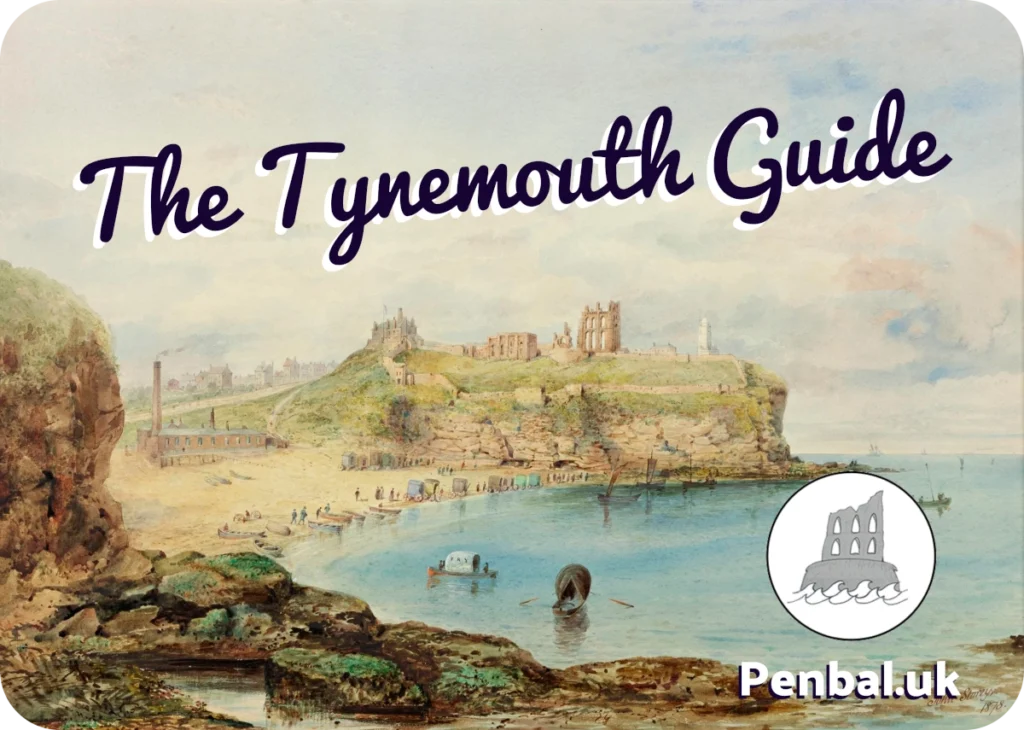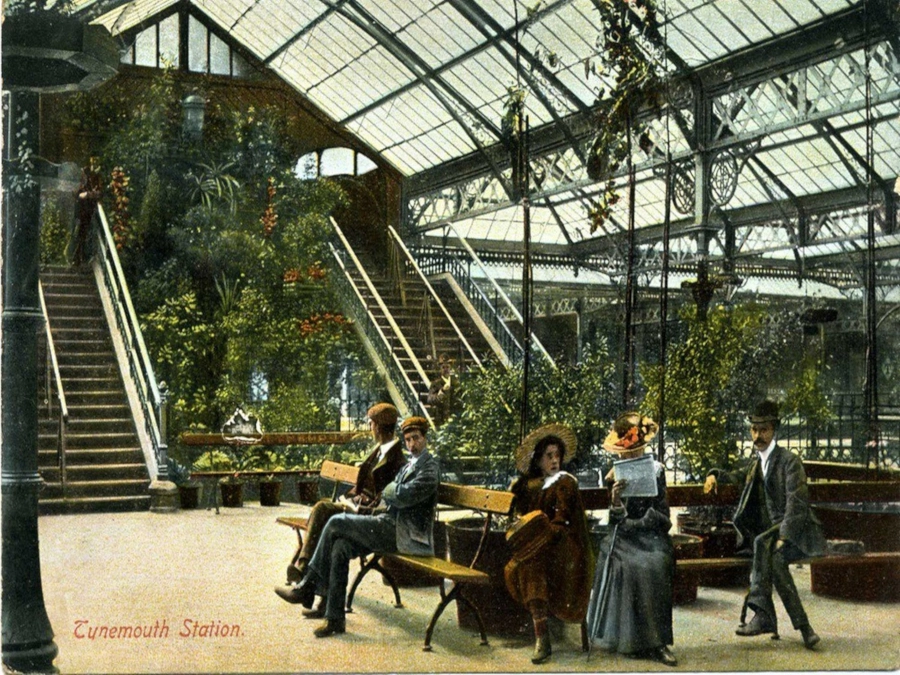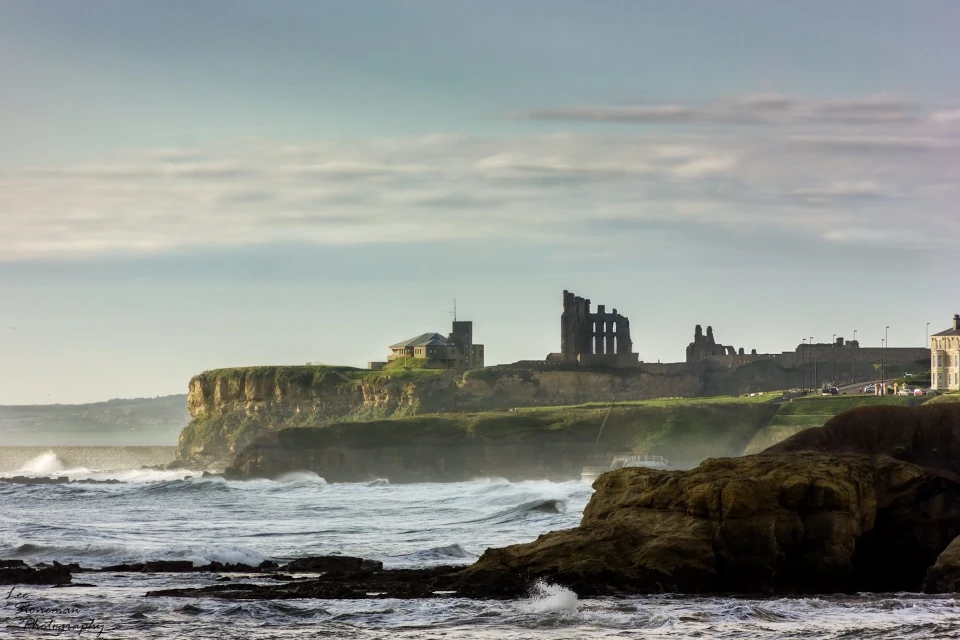Tynemouth Guide
Tynemouth Station
1. The Railways
Tynemouth Station is one of the most glorious railway stations in the country. It was built by the North Eastern Railway in 1882 as a showpiece for their new passenger line from Newcastle to the Coast. This catered to the thousands of tourists who were now coming to Tynemouth, when for the first time people were able to easily reach the Coast and return in a day.
The Victorians didn’t do things by halves and they built this station with scale in mind. They had a huge first class waiting room. They built four lines into the station and you can still see the original platforms that have been infilled. The west side of the station was mainly used as a goods entrance but passengers also disembarked there. On this west side, now Platform 1, they had a hydraulic lift for luggage, pulled by a wheel in the tower. They would load the lift with heavy trunks and these would then be passed over the bridge. If you look at the bridge, the middle section is flat so that the trunks could move acrosss to the passenger side where people could pick them up and move out of the station.
The Victorians decorated the station with all kinds of foliage and flowers. There’s also a wonderful tiled map of North Eastern Railway’s vast network. The North Eastern Railway were a massive company at the time and they were pioneers of station design. They were very proud of their stations and Tynemouth was their jewel in the crown. The North Eastern Railway also built the very first station in Tynemouth, an elegant sandstone building which we’ll come to at the end of this guide.

2. Renovation of the Station

Unbelievably, Tynemouth Station decayed dreadfully between the 1960s and 1980s. The electrified trains that had come into use had been replaced with diesel trains and the place became very drab. There was asbestos roofing as all of the glass panes had been knocked out, and the whole place was filthy and very badly neglected. There was even an awful plan to knock it all down and this was, it seems, supported by the Council. Fortunately, a community group formed called ‘Friends of Tynemouth Station’ to save the place.
They were able to secure the station, refurbish it and put the glass roof back together, so that we now have this wonderful showpiece which is the pride of the Metro network and one of the best Victorian stations in the country.







